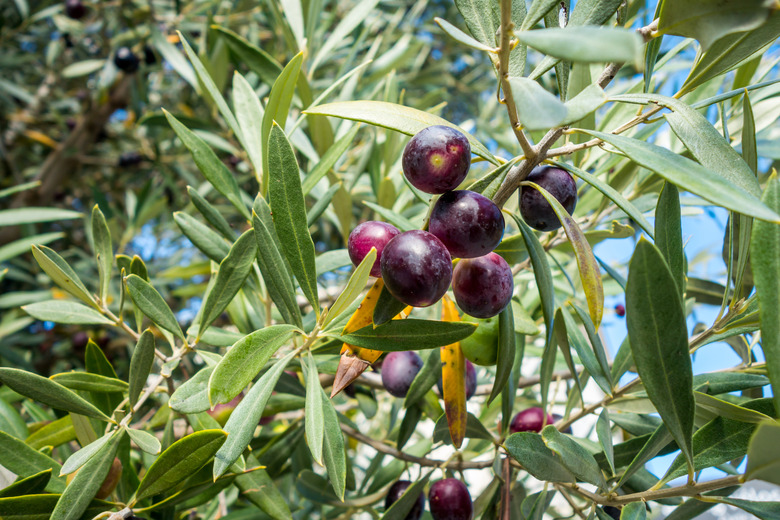How To Grow Olive Trees In The South
We may receive a commission on purchases made from links.
The South is singularly suited to grow olives in many cases because olives are warm-weather trees. In fact, these trees put on growth only when temperatures reach 70 degrees Fahrenheit in the spring. In the fall, when temperatures drop below 70 degrees, the olive tree sits passively, waiting for that magic number to appear again.
But there's a catch: Olive trees require a process called "vernalization" to set fruit. This means cool nights followed by warm days. So, depending on where you garden in the South, you may or may not get an olive tree to fruit.
Olive Tree Requirements
Olive Tree Requirements
Olives (Olea europaea) famously thrive in hot, dry areas, and mature trees can be killed in freezing temperatures of 15 degrees or below, while young saplings may succumb in 25-degree weather. Generally, they grow in U.S. Department of Agriculture plant hardiness zones 10 and 11, although some cultivars are more cold-tolerant, growing in zone 8 or 9.
Olive trees require full sun, without which no flowers and subsequent fruit will be produced. Although this tree can tolerate drought, it grows best when provided regular moisture. It needs well-drained soil and will fail to thrive if the soil becomes too waterlogged.
Fertilizer requirements are simple: nitrogen only. Olive trees easily extract nutrients from the soil, but these trees — in particular, mature trees — do require added nitrogen, approximately 1/2 to 2 pounds of actual nitrogen per year.
Best Olive Trees for the Humid South
Best Olive Trees for the Humid South
The production of olive trees has grown across the world in the last several decades, fueled by the many studies that show the benefits of olive oil to human health. This means that many areas without the traditional, ideal Mediterranean-like requirements have become successful in growing olive trees, including humid areas, like the Southern U.S.
A study published in Frontiers in Plant Science in November 2019 reports that the best cultivars for warm, humid areas — including those that lack cold enough winters to support vernalization — are Arbequina and Picual. Arbequina is a commonly planted variety in the U.S., with good cold hardiness and a spread of 12 to 15 feet when mature. Picual is the most commonly planted tree in Spain, with moderate cold tolerance and large fruits.
Planting an Olive Tree
Planting an Olive Tree
Choose a sunny site where your olive tree can ultimately reach a 20-foot spread, even for compact varieties. Olive trees can handle a wide variety of soils, from sandy to clayey, as well as a wide range of pH levels, from 5.5 to 8.5, but they must grow in soils with good drainage. Waterlogged soils and too-cold temperatures are the olive tree's primary enemies.
Plant a young 3- or 4-foot tree, which nurseries usually propagate via cuttings, in the spring after all danger of frost has passed. Dig a hole large enough to accommodate the root ball and deep enough so that the young tree will sit at the same depth in the soil as it did in the pot. There is no need to add fertilizer at this point; just backfill the hole, tamp it down well, and water thoroughly. When the tree is young, water regularly until it has become established.
Given proper conditions, flowering and fruiting occur at about 5 years of age. Most cultivars are self-fruitful, but planting more than one variety can increase yields. Olives set flower buds in the spring when cool nights (35 to 50 degrees) are followed by mildly warm days of about 80 degrees.
